
With all of the chaos currently happening in the banking industry and greater financial markets, in the coming months it will become increasingly more obvious to many contract manufacturers and their manufacturer customers there will be fewer banking options, and increasingly restricted access to capital, for a variety of reasons.
As some hardware startups may already know, the collapse of Silicon Valley Bank was partially due to a high concentration of US Treasuries and mortgage-backed securities on SVB’s balance sheet. But SVB depositors weren’t just VC portfolio companies and tech founders. And SVB’s problems were not just limited to the Silicon Valley-based bank popular with venture capital and private equity circles.
Ultimately, SVB’s fate, following several unsuccessful auction attempts, culminated in North Carolina-based First Citizens Bank & Trust acquiring the $209 billion (inflation adjusted) SVB bank for the cost of a MLB team signing a multi-year contract with a star batter.
“The turmoil we’ve seen in the last week has hit dead center in the lender group that supported more commercial mortgages in 2022 than any other.”
— Jim Costello, economist, MSCI Real Assets
But SVB is not alone. Many banks have been doing what SVB was doing the past several years – purchasing longer-term, higher-yielding bonds when SVB and other banks were cash rich. But why is this important?
SVB experienced a run on the bank, where depositors wanted to withdraw more cash than the bank has available.
Business owners and readers informed on various macroeconomic indicators in today’s economic environment only need to pay attention to current business prospects and commercial vacancy signs to understand why some bank depositors might want to withdraw their cash.
SEE ALSO
Transfer pricing risk in contract manufacturing supply chains
Costing modelers for quote pricing analysis and contract manufacturing negotiations
From commercial real estate vacancy, to tax receipts for businesses supporting office workers (whose number have been dwindling), to high disability rates, rising prices, rise in defaulting auto loans, increasing household debt, and more. Its all connected.
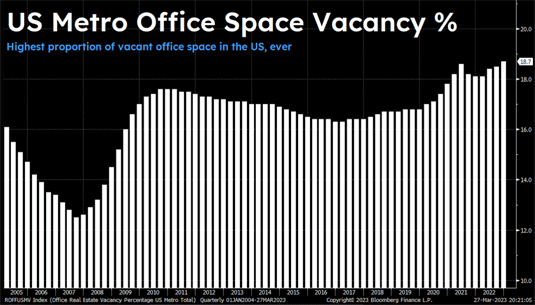
When tax receipts decline, governments have trouble paying workers wanting higher wages, running basic services on schedule, and administering management oversight.
As the chart indicates below, local and regional banks stepped up their commercial real estate (CRE) lending efforts in 2022 while most other sources of lending remained the same or retreated, according to MSCI Read Capital Analystics.
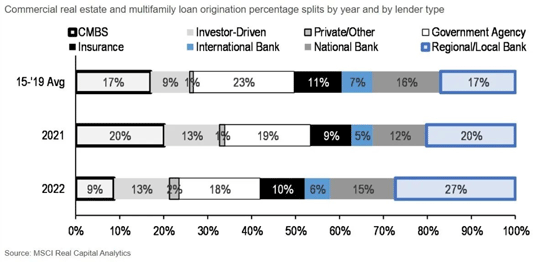
Commercial vacancies and defaults can be both leading and trailing indicators, depending on where problematic symptoms surface.
People need money, and so do banks and government.
And when tax receipts decline, governments have trouble funding pensions, paying workers wanting higher wages, running basic services on schedule, and administering management oversight. New taxes and raising taxes are often the standard playbook and governments need tax receipts to run efficiently.
Manufacturers need energy and city services and have reasons to be concerned amid softening demand across many markets: wondering if their bank is next.
In SVB’s case, as with many other banks today, these banks are illiquid. This means they have the money but some of it is tied up on balance sheets in long-term assets, such as bonds. When the SVB bank run began, SVB had to sell some of its treasury bond to raise cash to make depositor withdrawals whole.
“The Fed, Treasury and FDIC should come to terms with…the breadth of the problem. It’s not about a few troubled banks and an irrational run by panicky depositors. Week-end fire-figting only buys time. The liquidity-induced holiday from economic history has ended. They should be prepared for a pullback of everything everywhere all at once.”
— Kevin Warsh, Former Member, Federal Reserve Board
The problem is many banks are holding lower-yielding, say 5-year bonds, paying 2%, but now the US government is selling the same 5-year bond and paying 4%.
Banks knew the Federal Reserve was eventually going to raise rates at some point to help tame inflation (and they knew the value of their bonds would then fall), but they did not factor how fast rates would rise and now nobody wants to buy the bonds held by the banks because they can earn more buying bonds sold by the US government, and paying a higher rate.
This rate whip-lash to very high levels in a short period of time versus previous tightening cycles (see chart) changed the dynamics of SVB and other banks balance sheet financials from illiquid to insolvent because the bonds the banks need to sell on the open market are no longer worth what they paid for them. Read more on this here.
Change in the federal funds rate
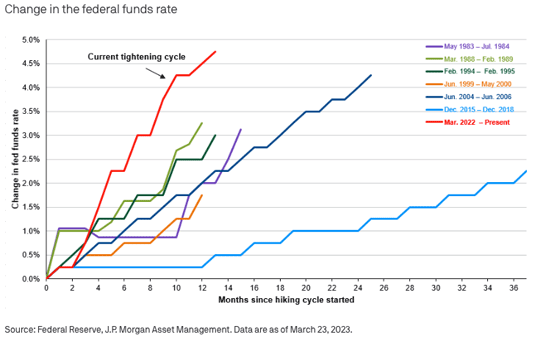
And while the Federal Reserve’s recent additional tool to its tool box, the creation of the BTFP (Bank Term Funding Program) to help many banks with similar exposure to lower interest USTs, and MBS, on their balance sheets , only about one-fifth of small banks’ assets meet the BTFP criteria for shifting onto the Fed Reserve’s balance sheet – leaving these smaller banks exposed. And there are lots of them.
In order to stop deposit flight the Fed and US Treasury must state unequivocally that all deposits will be protected and that bank loan capital will be honoured. Nothing less will suffice.
— Alasdair Macleod (@MacleodFinance) March 26, 2023
There is currently a borrowing squeeze underway by all commercial banks seeking help from the Fed’s BTFP to help banks cover bank run withdrawals and losses in hopes to divert a banking crisis contagion.
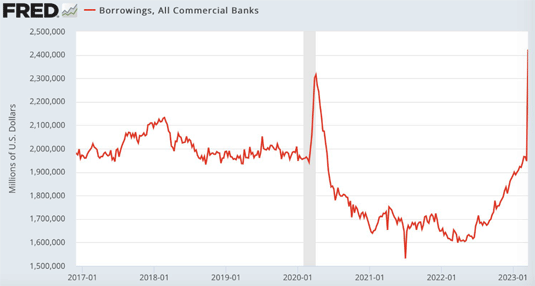
Interestingly, the BTFP, which began as a $25 billion program escalated just days after inception and expanded program scope to as much as $2 trillion. And credit is tightening.
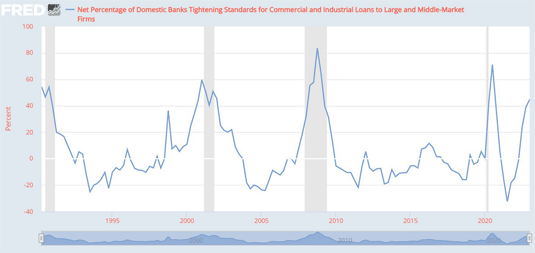
Add to this, Federal Reserve Jerome Powell and Secretary of the U.S. Treasury Janet Yellen have been holding briefings and participating in interviews telling media and Americans everything is fine.
If this were the case, why are banks borrowing billions of dollars at penalizing discount rates at the Fed’s discount window in amounts larger than during the financial crisis in 2008-9?
And why are small deposits declining while deposits at large banks are increasing, according to this chart in a recent report from mid-tier investment bank Jefferies, below.
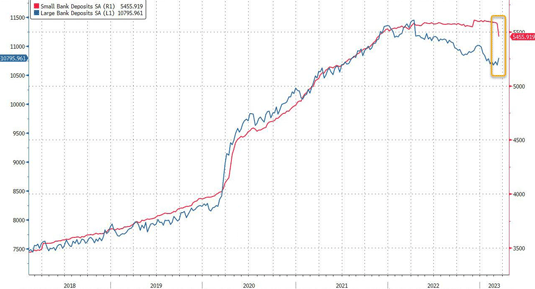
And herein lies another problem rising on the horizon for banks, businesses, and communities: small- and medium-sized banks are the primary lenders for local and regional commercial (i.e., industrial property) real estate. And banks rely on credit confidence equal to 20x to 25x leverage (to equity base), and cost of funds.
Some readers might think 20x to 25x leverage is high for banks. Well, it’s likely much higher, especially when off balance sheet assets like derivatives and other lines of credit are figured in. And one, local bank insolvency can impact multiple businesses and households in a region.
Impact to contract electronics industry
The storm in the banking sector is already impacting, in particular, small- and medium-sized manufacturers.
Tier-4 and tier-3, and some tier-2 and tier-1, contract electronics providers primarily bank with small- and medium-sized financial institutions for lending and servicing revolving lines of credit and there is a sharp increase in delinquencies in the commercial real estate market given the negative impact from higher interest rates and ‘large inventory of Class B and Class A office space’, according to Goldman Sachs in a recent article on zerohedge.com.
In your search results, you can add more Geographies, add more Services, plus Industries to further customize additional results.
Contract electronics providers need banks available to lend when providers want to transact mergers and acquisitions, grow or expand production capacity, and finance new technology and capital equipment projects to run their business.
Setting up surface mount technology (SMT) and printed circuit boards assembly (PCBA) production lines requires capital. Electronics OEM equipment customers require EMS and CM providers to invest heavily in equipment, technology, and labor to meet their customer program needs.
These upfront costs (loans) can be significant, and the return on investment may not be immediate even in situations with thoughtful NRE agreement clauses protecting reimbursement of cash flow against customer program spend.
Add to this, smaller banks hold around $2.3 trillion in commercial real estate debt, almost 80 percent of commercial real estate mortgages hold by all banks, further creating more bank worries.
This pressure on banks is further exacerbated by the shift toward remote work leading to higher commercial vacancies trending and reduced demand for office space, resulting in negative equity for banks.
SEE ALSO
How to know if your supplier components price is ‘best price’
RFP and RFQ guidance for sourcing contract electronic services
Small banks in the US witnessed a record outflow in deposits of $119 billion after the SVB collapse, while the nation’s largest 25 banks saw their deposits add $67 billion in deposits. Small and medium lenders are trapped in a cycle which will likely get much worse for manufacturers unable to get loans and financing from a top five US bank.
At the time of the SVB failure, Silicon Valley Bank was ranked among the nation’s 25 largest banks and was even touted by Forbes on it’s 2023 America’s Best Banks list.
U.S. bank deposits
Overall deposits at U.S. banks declined after sharp inflow in the wake of pandemic aid. Following SVB’s collapse March 10, 2023, deposits at small banks fell sharply. See below.
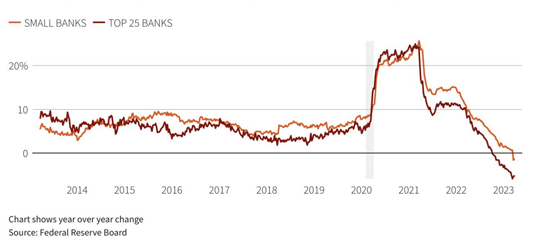
Venture Outsource has reasons to believe it is highly likely contract manufacturing industry will see increasing numbers of closures of many small- and medium-sized banks in the coming weeks and months.
Large banks outperform large banks
Below, comparing performance of S&P500 500 large cap bank index vs S&P600 small cap bank index.
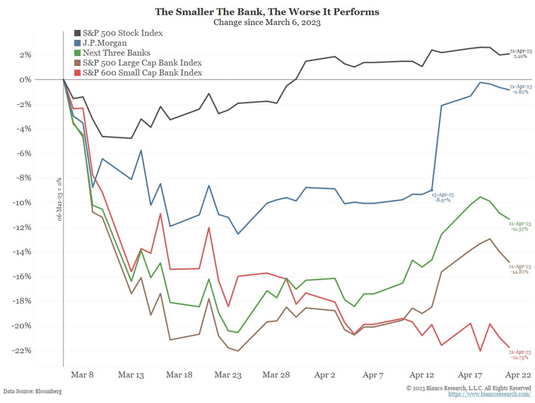
Chart above courtesy Jim Bianco via Twitter @biancoresearch
Also important is Fed policies do not typically play out in the broader economy until 12 to 24 months later, which means 2024/25 will see a large number of tier-4 and tier-3 contract manufacturers struggling with cash flows if they cannot service lines of credit for operations and their customer programs.
Venture Outsource believes most manufacturing industry markets will experience further slowdown in economic growth as 2023 progresses.
Contract manufacturing industry troubles
After 15+ years of easy money, there are many layers to the banking crisis still unfolding, Now, more than ever, contract manufacturing debt-to-equity is a focus for savvy electronics OEM equipment manufacturers when finding and vetting contract manufacturing partners, especially when auditing provider finances.
Electronics manufacturing companies wanting contract manufacturing industry benchmarking data on balance sheet debt-to-equity, by tier, can contact Venture Outsource for the information.
A couple of other challenges creating potential problems for contract manufacturers already in precarious financial situations include the fact many contract electronics providers are reliant on just a small number of large customers contributing most of the providers’ revenue, and if these customers do not pay on time, it can cause additional/significant cash flow issues.
Poor inventory management can also impact cash flow and tie up cash. If demand for certain products falls or production is delayed, this can create a surplus of inventory that cannot easily be converted to cash.

Managing accounts receivable is also critical for cash flow management. Contract electronics providers must keep track of outstanding payments and follow up with customers to ensure timely payment. In some cases, customers have more thorough program management practices than providers do and sometimes may dispute invoices, which can delay provider accounts receivables further and create cash flow problems.
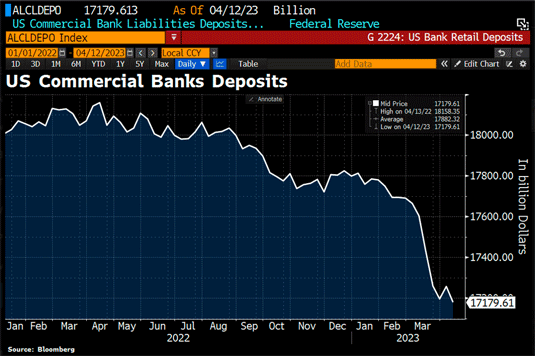
Chart above courtesy Holger Zschaepitz via Twitter @Schuldensuehner
Tips for OEM customers of contract manufacturers to navigate an unstable banking environment
To be clear, nothing in this article should be considered as financial advice, and given the uncertainty in the banking environment today, below are some things electronics OEM manufacturers might consider to gain additional control over their material planning and contract manufacturing supply chain execution with focus on bracing contract manufacturing supply chains with effective risk management, strict cost discipline and suitable prioritizing of projects, such as:
Examine the extent of long-dated UST exposure and MBS exposure on bank balance sheets for banks you are working with or considering. Beware some banks are re-categorizing their bonds from ‘available-for-sale’ to ‘held-to-maturity’. This change lets banks value their bond holdings above market price. See graph below detailing renewed interst in banks’ rate issues.
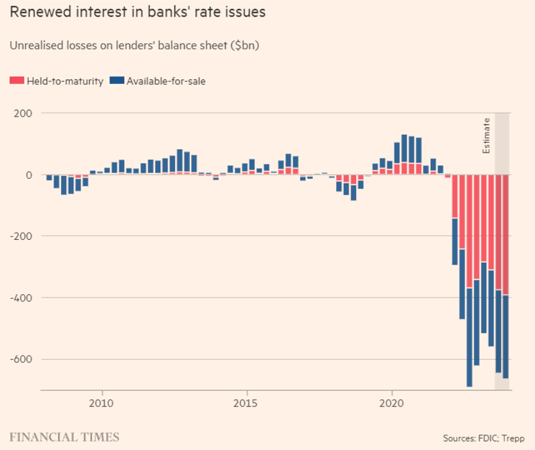
For some banks, excluding unrealized losses from their balance sheets enables reporting higher capital levels when in reality balance sheet assets are worth less, according to a recent article in WSJ.com. Understanding a bank’s bond rating, outlook, and capital ratio is also helpful.
In addition to the percent of long-dated bonds on bank balance sheets, finding out what percentage of long-dated bonds on bank balance sheets were acquired with leverage can also be revealing.
Minimize operating input costs to help conserve cash while maximizing costly indirect labor productivity.
Optimize total landed cost for contract manufacturing programs to help reduce spend (try MCOGs calculator)
Deploy costing modelers designed specifically for contract electronics programs that can accurately predict internal provider costs and pricing of contract electronics fees and services for more effective quote pricing comparison and negotiations.
For EU-based manufactures, our article on macroeconomic financial programs for EU nations and manufacturing communities into 2027 may also be helpful, here.
Get list of EMS manufacturers for your requirements (Its free)
Save time and money. Find quality EMS manufacturers. Fast. Venture Outsource has a massive, global database of contract electronic design and manufacturing capabilities. Speak with a Provider Advisor.
“Was able to very quickly find details on the important elements of setting up EMS and ODM partnerships, talked with an advisor for personalized info on quality providers matching our requirements while getting up to speed quickly about the industry and connect with key staff from like-minded companies and potential partners. Great resource.”
— Jeff Treuhaft, Sr. Vice President, Fusion-IO
Advisors tell you matches we find for your needs, answer your questions and, can share EMS industry knowledge specific to your industries and markets.








